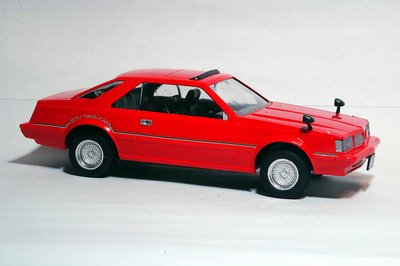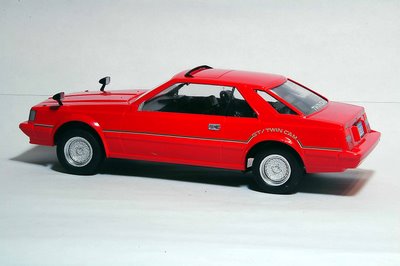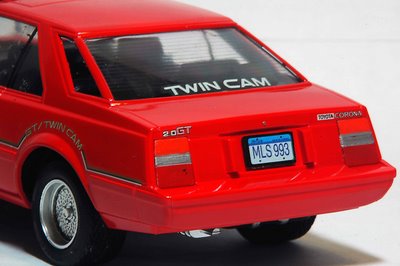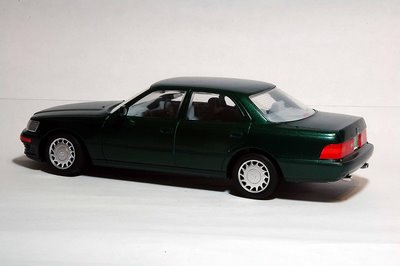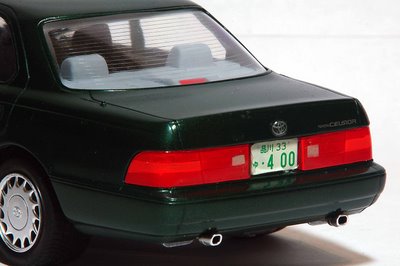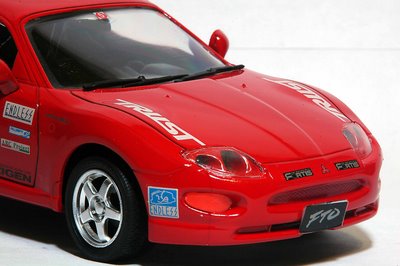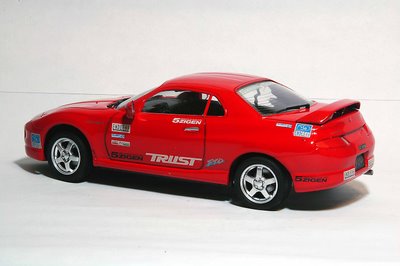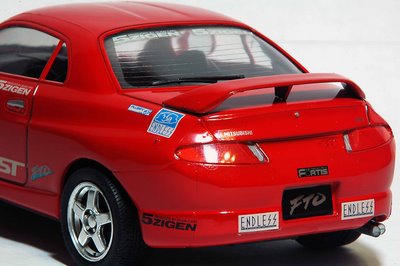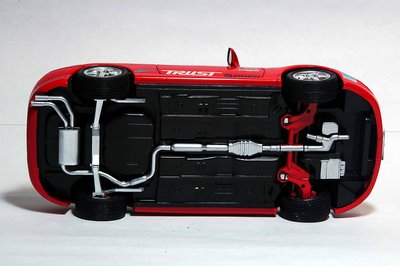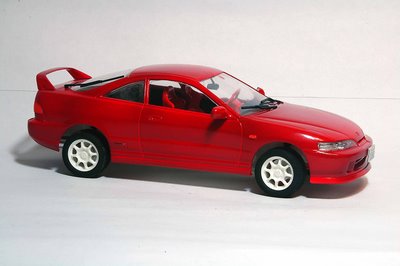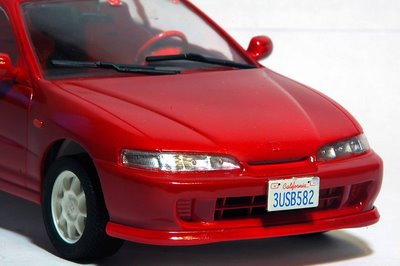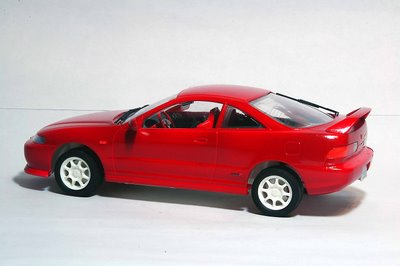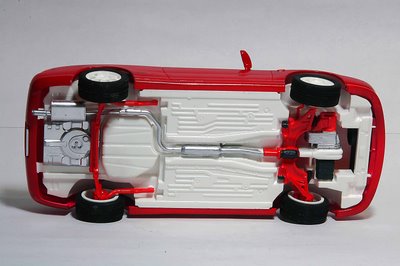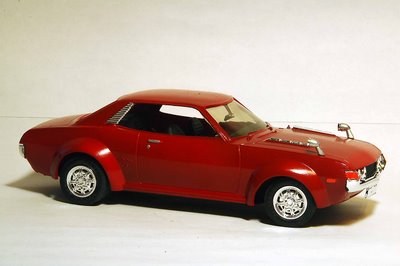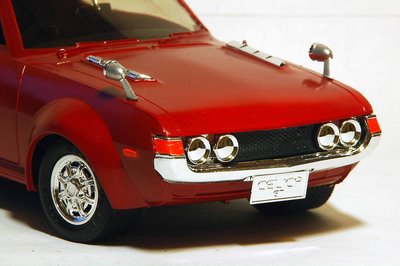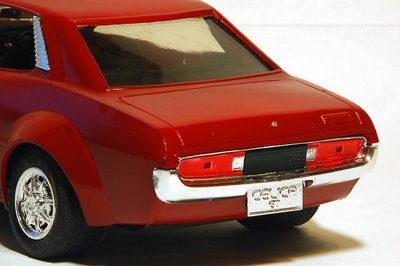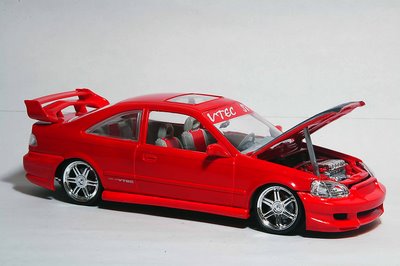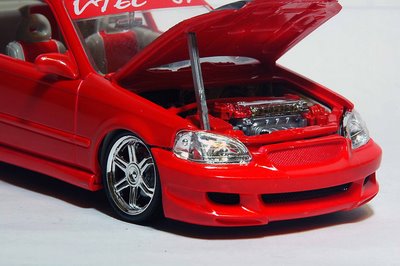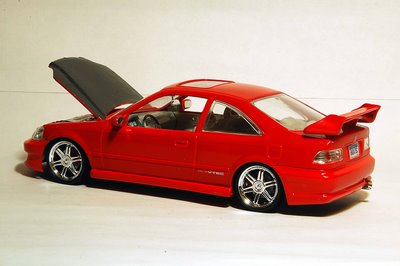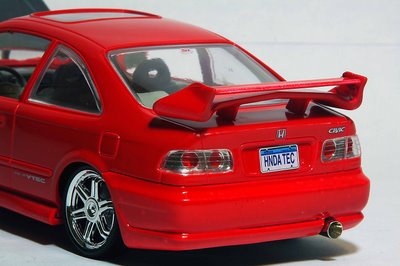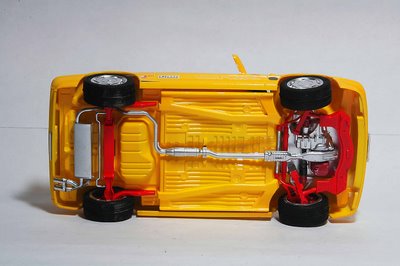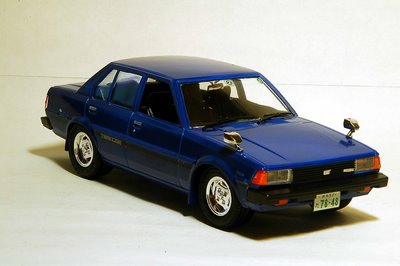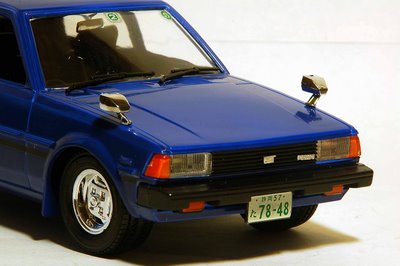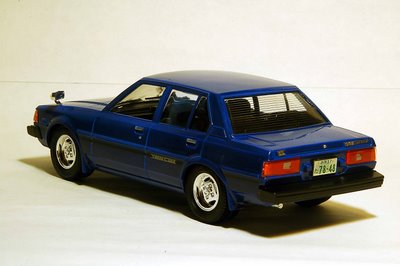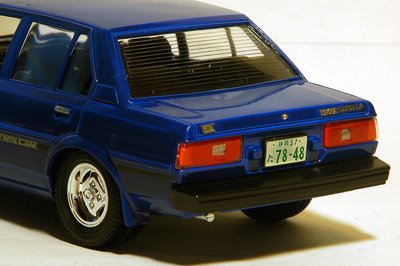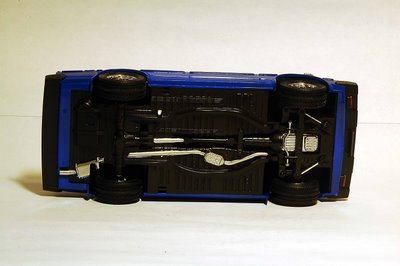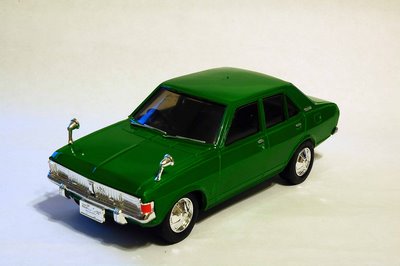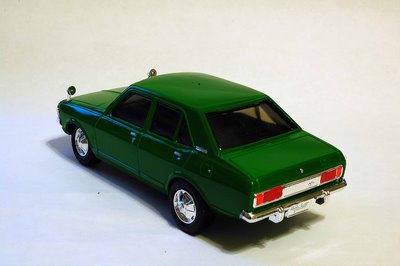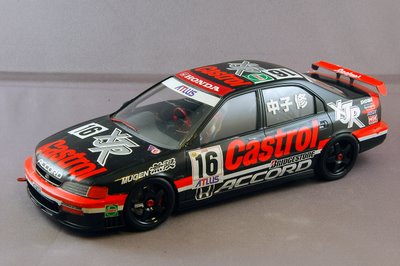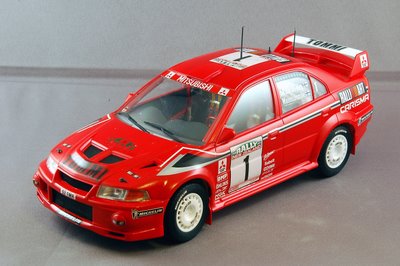The Evo VI's changes mainly focused on cooling and engine durability. It received a larger intercooler, larger oil cooler, and new pistons, along with a titanium-aluminide turbine wheel for the RS model, which was a first in a production car. Also, the Evo VI received new bodywork yet again, with the most easily spotted change in the front bumper where the huge foglights were reduced in size and moved to the corners for better airflow. A new model was added to the GSR and RS lineup; known as the RS2, it was an RS with a few of the GSR's options. Another limited-edition RS was known as the RS Sprint, and was tuned by
Ralliart to be lighter and more powerful with 330 hp.
Yet another special edition Evo VI was also released in 1999: the Tommi Makinen edition, named after Finnish rally driver
Tommi Makinen that had won Mitsubishi four WRC drivers championships. It featured Red/Black Recaro seats (with embossed T. Makinen logo), 17" ENKEI white wheels, a leather MOMO steering wheel and shift knob, a titanium turbine that spooled up quicker, front upper strut brace, lowered with tarmac stages in mind, a quicker lock to lock and amongst others colours, came in an exclusive shade of red with special decals, replicating Tommi Makinen's rally car's colour scheme. This car is also sometimes referred to as an Evo 6½.
It was during the Evo VI's model run that American car enthusiasts, who had been previously denied the Evolution models, began to clamour for its introduction to the United States. [
citation needed] This was primarily due to exposure of the Evolution in video games such as the
Gran Turismo series. [
citation needed]





